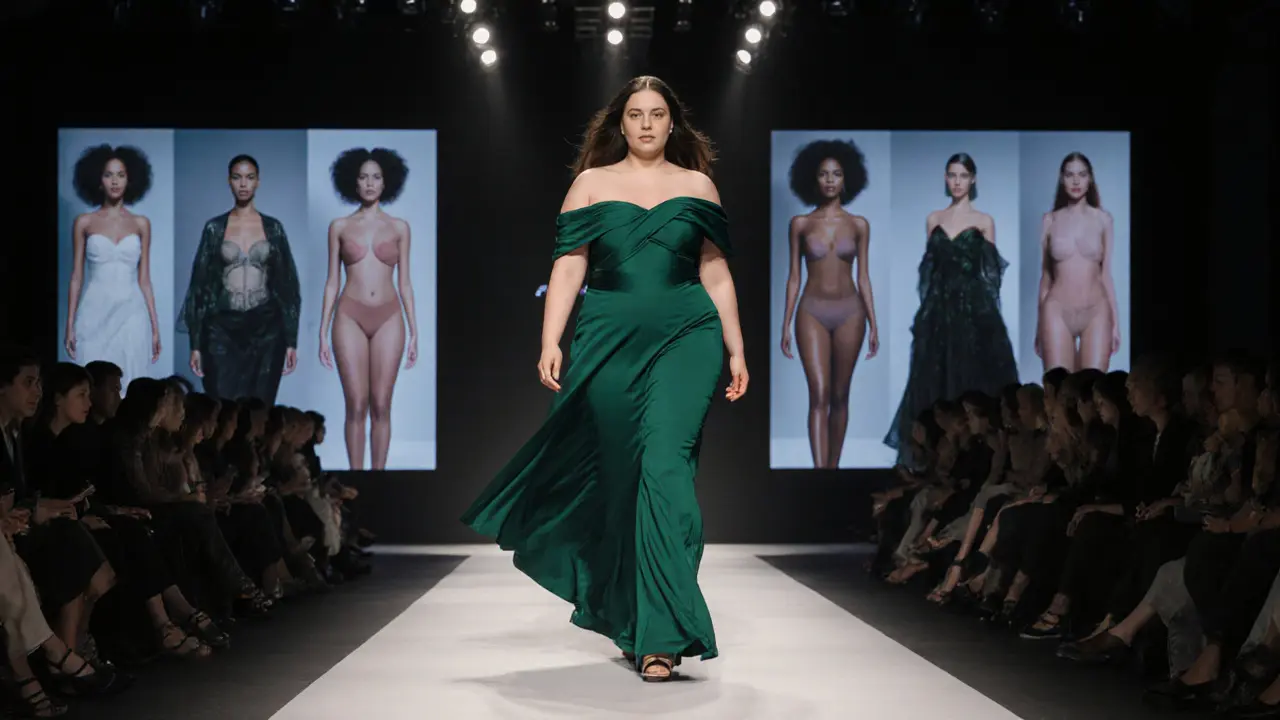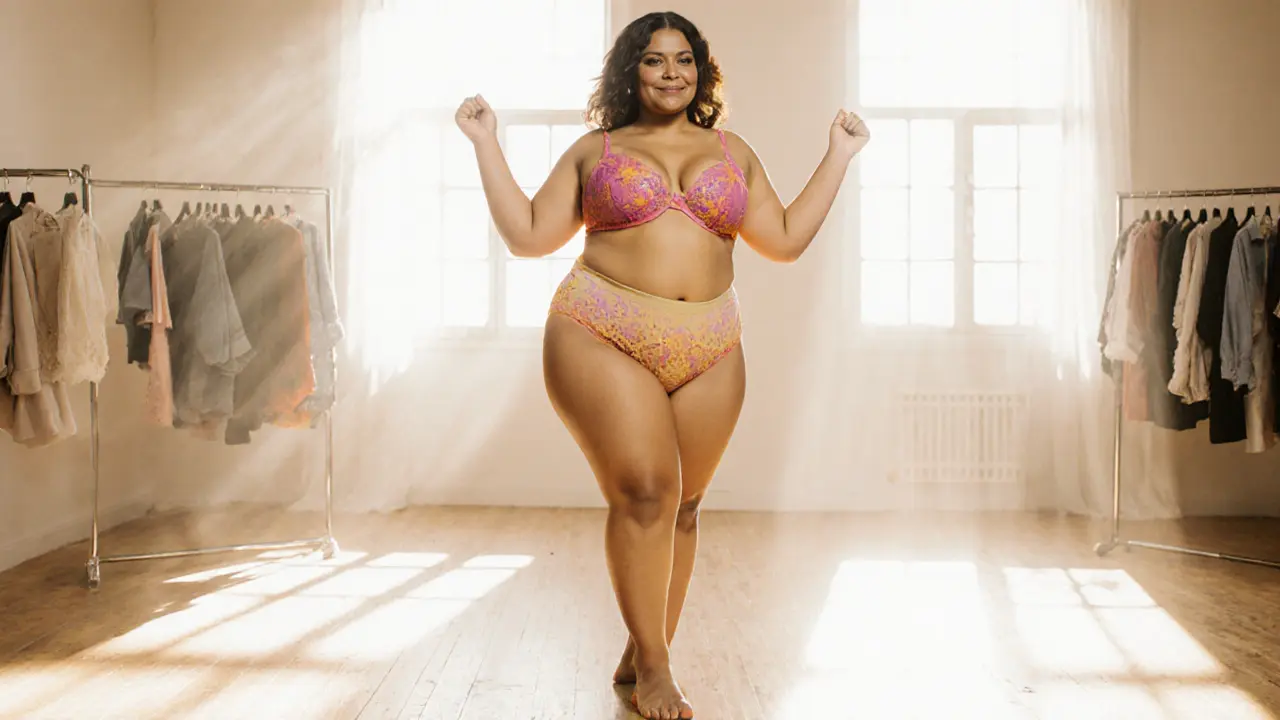What Is the Weight Requirement for a Plus-Size Model?
There’s no single number that says plus-size model must weigh X pounds. That’s the first thing you need to know. The fashion industry doesn’t use a universal scale to define plus-size models-it uses measurements, proportions, and how clothing fits on the body. If you’re wondering if you’re “big enough” to model, stop checking your weight. Start checking your measurements and how you look in sample sizes.
Key Takeaways
- Plus-size models typically wear sizes 12-24 in the U.S., not based on weight alone.
- Brands like Savage X Fenty, Aerie, and Lane Bryant hire models based on body shape, not a scale reading.
- Height, hip, waist, and bust measurements matter more than pounds.
- There’s no official cutoff-different agencies and brands have their own standards.
- Confidence and personality are just as important as numbers.
Comprehensive Guide to Plus-Size Modeling
You’ve seen them on billboards, in magazines, and scrolling through Instagram: women with curves, strong shoulders, full hips, and unapologetic smiles. They’re not just models-they’re changing what beauty looks like in fashion. But if you’re thinking about stepping into this world, you’re probably wondering: Do I have to hit a certain weight?
The short answer? No. The real answer? It’s about fit, not weight.
Plus-size modeling isn’t about being “overweight.” It’s about representing the bodies of real people who wear sizes 12 and up. And the industry has changed. Ten years ago, you might’ve been told you needed to be under 200 pounds. Today, brands are hiring models who wear size 20, 22, even 24-and they’re not asking for a number on a scale.
Definition and Context
A plus-size model is a fashion model who wears clothing sizes 12 and above in the U.S. (or 16+ in the UK). This category exists because the majority of women in the U.S. wear these sizes-but for decades, fashion didn’t reflect that. Brands ignored them. Runways didn’t show them. Magazines didn’t feature them.
That started to shift around 2015. Campaigns like Aerie’s #AerieREAL and Savage X Fenty’s inclusive shows brought curves to the front. Suddenly, designers needed models who could wear their clothes-real clothes, on real bodies. That’s when the focus shifted from weight to fit.
Today, plus-size models aren’t just a niche. They’re a growing segment of the industry. And brands don’t care if you weigh 160 or 220 pounds. They care if your waist-to-hip ratio works for their pants. If your shoulders fit their jackets. If your skin looks good under studio lights.
Benefits of Plus-Size Modeling
Why does this matter? Because representation changes how people see themselves. When a teenager sees a model who looks like her on a billboard, she stops thinking she needs to lose weight to be beautiful. That’s powerful.
For you, personally, modeling can mean:
- Confidence you didn’t know you had
- A career that celebrates your body, not shames it
- Working with brands that actually care about diversity
- Being part of a movement that’s changing fashion forever
Take Ashley Graham. She didn’t become a supermodel because she weighed 180 pounds. She became one because she walked into a room with her head high, spoke her truth, and refused to apologize for her size. That’s what brands are looking for-not a number, but a presence.

Types of Plus-Size Models
Not all plus-size models are the same. The industry has split into a few main types:
- Commercial plus-size: These models appear in catalogs, department store ads, and online retailers like Target or Nordstrom. They wear sizes 12-20 and look like everyday women.
- High fashion plus-size: These are the models you see on runways for designers like Christian Siriano or Chromat. They’re often taller (5’9”+), with longer limbs, and wear sizes 14-18.
- Swim and lingerie models: Brands like Savage X Fenty and Lane Bryant hire models with curves, full hips, and strong backs. These models often wear sizes 16-24 and need strong posture and confidence.
- Editorial plus-size: Featured in magazines like Vogue or Elle, these models are chosen for their unique look-not just size, but bone structure, skin tone, and expression.
Each type has different expectations. A swim model doesn’t need to be tall. A runway model does. So don’t assume one size fits all-because it doesn’t.
What Measurements Matter Most
Forget the scale. Here’s what agencies and brands actually look at:
- Height: Usually 5’8” to 6’0” for runway; 5’5” to 5’9” for commercial
- Bust: 38”-48”+
- Waist: 28”-38”+
- Hips: 40”-50”+
- Body proportions: Are your legs long? Do your shoulders slope naturally? Do you have a defined waist-to-hip ratio?
For example, a model who’s 5’7”, weighs 200 pounds, with a 42” bust, 34” waist, and 46” hips might be perfect for a bra campaign. Another who’s 5’10”, 180 pounds, with a 38” bust, 30” waist, and 42” hips might be ideal for a high-fashion show. Same weight, completely different roles.
How to Get Started
Ready to try? Here’s how:
- Take clear, natural photos-no filters, no airbrushing. Stand in front of a plain wall. Wear simple underwear or a swimsuit.
- Measure your bust, waist, and hips. Write them down. Don’t guess.
- Research agencies that specialize in plus-size models: Wilhelmina, IMG Models, and Next Model Management all have plus divisions.
- Send your photos and measurements to 5-10 agencies. Don’t pay for “model scouting” services-legit agencies don’t charge upfront fees.
- Be ready to attend castings. Show up on time, be polite, and bring your confidence.
Some models get discovered on Instagram. Others walk into open calls. There’s no one path. But the one thing every successful plus-size model has? They didn’t wait for permission. They just showed up.
What to Expect During a Casting
First time at a casting? Don’t panic. You’ll walk into a room with a few other models. They’ll ask you to turn around, walk a few steps, and maybe hold a pose. They’re not judging your weight-they’re seeing how your body moves in clothes. Do you look natural? Do you own the space? Do you smile with your eyes?
Some agencies will ask for your measurements. Others will just look. If they’re interested, they’ll say, “We’ll be in touch.” That’s it. No weird questions about your diet. No pressure to lose weight. If someone tells you to “get smaller,” walk out. That’s not your industry.

Pricing and Booking
Pay varies wildly. A local catalog shoot might pay $200-$500. A national campaign with a major brand? $5,000-$20,000. Top plus-size models like Ashley Graham or Tess Holliday earn six figures.
As a beginner, expect to work for lower pay or even trade (free photos for portfolio). But never pay to model. Legit agencies take a commission (usually 15-20%) from your earnings-they don’t ask you to pay them upfront.
Comparison Table: Plus-Size vs. Standard Size Modeling
| Feature | Plus-Size Modeling | Standard Size Modeling |
|---|---|---|
| Typical U.S. Clothing Size | 12-24 | 0-8 |
| Height Requirement | 5’5”-6’0” | 5’8”-6’0” |
| Key Measurements | Bust 38”+, Waist 28”+, Hips 40”+ | Bust 32”-34”, Waist 23”-25”, Hips 34”-36” |
| Primary Brands | Aerie, Savage X Fenty, Lane Bryant, Torrid | Chanel, Gucci, Victoria’s Secret (historically) |
| Focus | Body shape, proportion, confidence | Slenderness, symmetry, extreme thinness |
FAQ: Your Questions About Plus-Size Modeling Answered
Do I need to be a certain weight to be a plus-size model?
No. There’s no official weight requirement. Plus-size modeling is based on clothing size, body measurements, and how you look in garments-not your weight on a scale. A model who weighs 190 pounds with a 40” bust and 42” hips may be perfect for one brand, while someone who weighs 210 pounds with a 44” bust and 48” hips could be ideal for another.
Can I be a plus-size model if I’m not tall?
Absolutely. While runway models are often 5’9” or taller, commercial and swim modeling don’t require height. Many successful plus-size models are between 5’5” and 5’8”. Brands like Lane Bryant and Aerie prioritize real proportions over height.
Do I need to lose weight to get hired?
Never. Legitimate agencies and brands hire you for your current body. If someone tells you to lose weight before they’ll consider you, they’re not the right fit. The industry is moving toward body positivity-your job is to show up as you are.
How do I find a reputable plus-size modeling agency?
Look for agencies with established plus-size divisions like Wilhelmina, IMG Models, or Next Model Management. Check their websites for client lists and model portfolios. Never pay to join. Legit agencies earn money by taking a commission from your bookings, not by charging you upfront.
Is plus-size modeling a real career?
Yes. Top plus-size models earn six-figure salaries, appear in national campaigns, and walk major runways. The demand is growing as brands realize that 67% of U.S. women wear size 14 or above. This isn’t a trend-it’s a necessary shift in fashion.
Final Thoughts
If you’re reading this because you’ve been told you’re “too big” to model-you’re not. The fashion industry is finally catching up to reality. Your body isn’t a flaw. It’s a market. And it’s valuable.
You don’t need to be perfect. You don’t need to be thin. You just need to show up. Take the photos. Measure your body. Send your info. Say yes to the opportunity-even if you’re scared.
The world doesn’t need another model who fits a mold. It needs you-exactly as you are.
